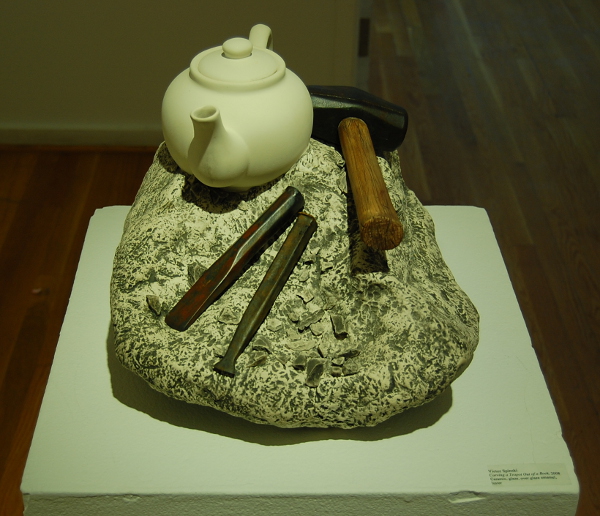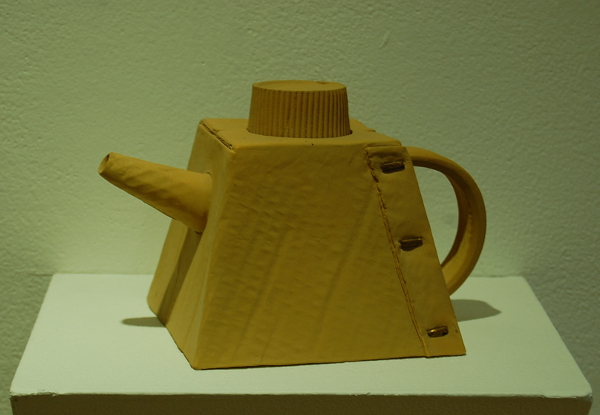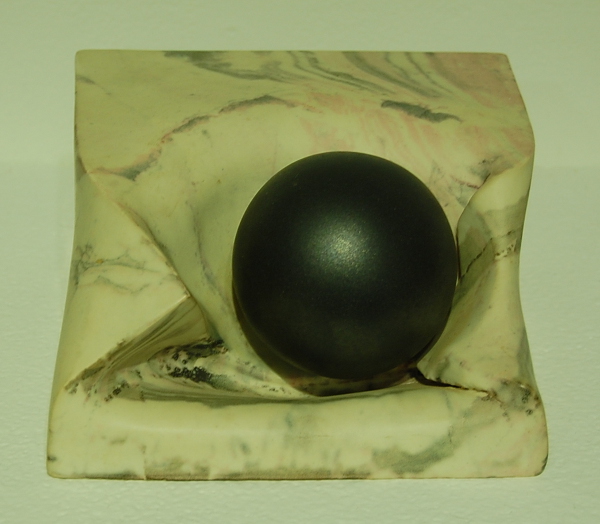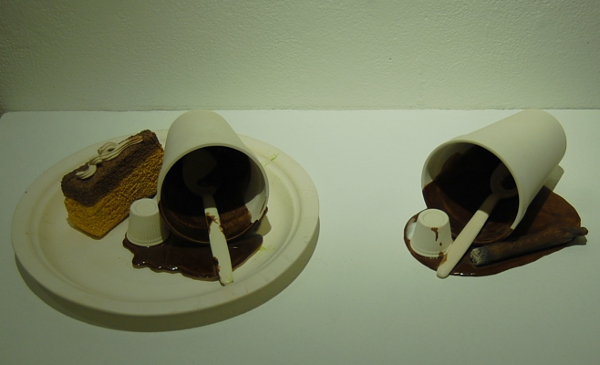
Victor Spinski retrospective at The Clay Studio
Victor Spinski was, by all accounts, a distinctive individual whose personality carried through to each of his many nuanced artworks. The Clay Studio, a Knight Arts grantee, is currently exhibiting a retrospective of the late ceramic artist’s career that originated at West Chester University’s Knauer Gallery before making its way to Philadelphia. Full of visual humor, highly realistic trompe l’oeil representations, and a wide range of subjects, this sampling of Spinski’s creations is an impressive testament to an equally remarkable life.
Born in World War II Poland, growing up in refugee camps while his father worked with the resistance and later the American military, Spinski eventually immigrated to the United States, where he received a degree in Russian Literature and later served in the Marines. After being injured and receiving a Purple Heart from an active combat tour in Vietnam, he returned to attend Indiana University, where he obtained an MFA in ceramics. That is where this exhibition begins.
One of the most obvious recurring themes in Spinski’s ceramic work is the image of the teapot. He utilizes this humble kitchen apparatus in a variety of ways to examine different physical materials, even if each piece is actually a ceramic sculpture. In “Carving a Teapot Out of a Rock,” we find just what we might expect: a hunk of some granite-like stone, a pile of chisels, a hammer, a few chips of cut away scrap material, and a pristine white teapot emerging from the mass. While stone is not too visibly dissimilar from clay, the rusty surfaces of the metal chisels and the grains of the wooden hammer handle are startling when it becomes apparent that they are all the same substance, and indeed one solid object.
Victor Spinski, “Cardboard Teapot.”
Nearby Spinski uses his skill to craft another teapot as if it were built from corrugated cardboard and staples. Here, the papery appearance sort of plays second fiddle to the Dada-style trope of a cardboard kettle. Not only would a flammable teapot come to quite the fiery end on a stovetop, but an absorbent, permeable container wouldn’t even hold any water to begin with. No doubt Victor Spinski found this concept quite entertaining…
Victor Spinski.
Spinski’s wit doesn’t end there, however, as he takes a social slant with a big ‘wooden’ crate filled with bars of ‘gold’ bullion (again, all ceramic, in case that wasn’t immediately clear). Some of the top planks look like they have been pried back to reveal the luster of the metallic interior. On the other hand, the outside is stamped with a sobering label: “Spinski Anti-Poverty Relief Corp.” Seemingly a criticism of amassed wealth, inequality and the inherent value of gold, one imagines these boxes dropped as aid to a war-torn, famine-struck region. Gold may be economically valuable, but it can’t cure illnesses or feed the hungry.
Victor Spinski, “Cannon Ball in Marble.”
In a few occasions, the artist takes more abstract excursions, such as “Cannon Ball in Marble” which finds a dark, spherical form stuck in the crevice of a piece of white, marbled matter. If not for the title, this piece could be entirely abstract and associative. As for its neighbor “Medusa,” we find an all too realistic looking snake coiled around a gold nugget. No mythical creature with serpent hair exists here, and we are left instead with this symbolic interpretation.
Victor Spinski, “Medusa.”
And if those dirty paper plates, disposable utensils and oozing chocolate puddles are alarming in the otherwise presentable gallery space, don’t fret. That’s just another one of Spinksi’s practical jokes. If not for their placement on a display shelf, one might think the cleanup from the opening reception was pretty atrocious.
Victor Spinski, “Cake on the Plate” and “Spilled Cup.”
While the Clay Studio regularly showcases spectacular ceramic artwork from around the country, this retrospective of just one artist – Victor Spinski – is practically unmatched in both aptitude and imagination. Be sure to see the exhibit before it ends on February 1.
The Clay Studio is located at 137-139 North 2nd St., Philadelphia; [email protected]; theclaystudio.org.
Recent Content
-
Artsarticle ·
-
Artsarticle ·
-
Artsarticle ·






